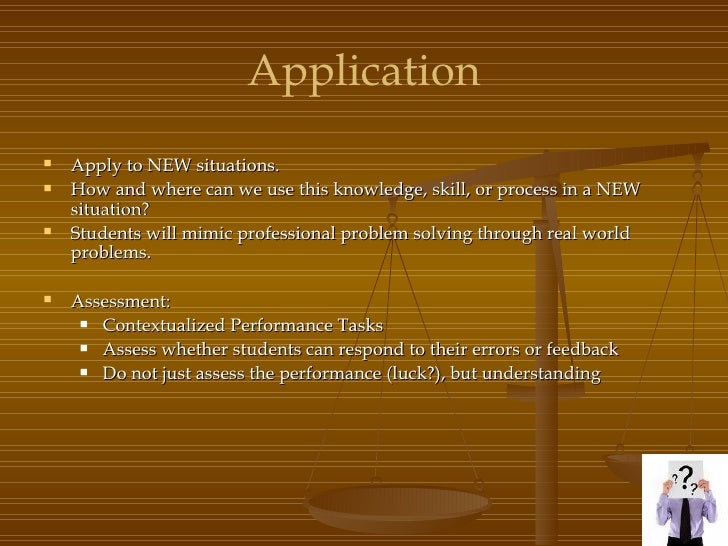Deep hot linking is one of those digital concepts that can either make or break your online presence. Imagine this: someone takes an image from your website, embeds it into their own site, and voila! They're now using your content without permission, bandwidth, and resources. Sounds like a nightmare, right? Well, deep hot linking isn't always bad news. When done ethically, it can actually boost your site's visibility and engagement. But how exactly does it work, and what do you need to know to stay ahead of the game?
In today's digital world, understanding the ins and outs of deep hot linking is crucial for anyone who owns a website or runs an online business. Whether you're a blogger, an e-commerce owner, or just someone passionate about digital marketing, this concept plays a significant role in how your content is consumed and shared online.
But don't worry, we've got you covered. In this article, we'll dive deep into the world of deep hot linking, exploring its definition, benefits, potential drawbacks, and best practices. By the end of it, you'll have a solid understanding of how to leverage this powerful tool while protecting your own content from misuse. So, buckle up and let's get started!
Read also:Vix The Volatility Index Unveiled
Here's a quick overview of what we'll cover:
- What is Deep Hot Linking?
- How Does Deep Hot Linking Work?
- Benefits of Deep Hot Linking
- Potential Drawbacks and Risks
- Legal Implications of Deep Hot Linking
- Best Practices for Using Deep Hot Links
- Protecting Your Content from Unauthorized Hot Linking
- Tools and Techniques for Monitoring Hot Links
- Case Studies: Real-World Examples of Deep Hot Linking
- Final Thoughts and Next Steps
What is Deep Hot Linking?
Deep hot linking refers to the practice of embedding or linking directly to specific files or resources on another website. This could include images, videos, PDFs, or any other type of media. Instead of downloading the content and hosting it on their own server, users can simply create a link that points directly to the original source. It's like borrowing someone else's stuff without asking—except sometimes, it's perfectly okay!
How Is Deep Hot Linking Different from Regular Linking?
Regular linking involves pointing to a webpage or URL, which is a common practice across the web. On the other hand, deep hot linking goes deeper by accessing specific files or resources hosted on another server. While regular linking is generally accepted and encouraged, deep hot linking can raise ethical and legal concerns if not handled properly.
For example, let's say you're running a blog about travel photography, and you find an amazing image of a sunset on another site. Instead of saving the image and uploading it to your own server, you could simply use a direct link to the original image. Sounds convenient, right? But hold on—there's more to it than meets the eye.
How Does Deep Hot Linking Work?
When you create a deep hot link, you're essentially creating a shortcut that points directly to a file hosted on another server. This means that whenever someone visits your site and views the linked content, they're actually accessing the original file from its source. The process happens seamlessly in the background, so visitors may not even realize they're viewing content hosted elsewhere.
Here's a step-by-step breakdown of how it works:
Read also:Impractical Jokers Joe Gatto Accused By Second Woman A Former Employee Of Inappropriate Behavior Exclusive
- Identify the file or resource you want to link to (e.g., an image, video, or PDF).
- Find the direct URL of the file (usually by right-clicking and selecting "Copy Image Address" or a similar option).
- Embed the URL into your website or platform using HTML code or a content management system.
- When users visit your site, they'll see the content as if it were hosted on your server, but in reality, it's being pulled from the original source.
While this might sound like a quick fix for adding high-quality content to your site, there are some important considerations to keep in mind. Let's dive into the benefits and drawbacks in the next section.
Benefits of Deep Hot Linking
Believe it or not, deep hot linking can actually offer several advantages when used responsibly. Here are some of the key benefits:
1. Saves Bandwidth and Storage
By linking directly to external files, you can reduce the amount of storage space and bandwidth required for your own site. This is especially useful if you're dealing with large media files like high-resolution images or videos.
2. Simplifies Content Management
Instead of constantly downloading and uploading files, you can simply create links to external resources. This streamlines the content management process and ensures that your site stays up-to-date with the latest versions of the files.
3. Enhances User Experience
Embedding external content can improve the overall user experience by providing richer, more engaging media without the need for additional downloads or plugins.
Of course, these benefits come with a few caveats, which we'll explore in the next section. But for now, it's worth noting that deep hot linking can be a powerful tool when used ethically and responsibly.
Potential Drawbacks and Risks
While deep hot linking offers several advantages, it's not without its downsides. Here are some of the potential drawbacks to consider:
1. Bandwidth Theft
When someone embeds your content on their site, they're essentially using your server resources without permission. This can lead to increased bandwidth usage, slower load times, and higher hosting costs for you.
2. Copyright Infringement
Using someone else's content without proper attribution or permission can result in legal issues. Even if you're not intentionally trying to steal content, failing to credit the original creator can still land you in hot water.
3. Dependency on External Servers
If the original file or server becomes unavailable, your embedded content will no longer work. This can lead to broken links, missing images, or other issues that negatively impact your site's performance.
As you can see, deep hot linking is a double-edged sword. While it offers convenience and flexibility, it also comes with risks that need to be carefully managed. Let's take a closer look at the legal implications in the next section.
Legal Implications of Deep Hot Linking
The legality of deep hot linking varies depending on the jurisdiction and the specific circumstances. In general, embedding content without permission may violate copyright laws, especially if the original creator has explicitly prohibited such use. However, some courts have ruled that deep hot linking is not inherently illegal, as long as it doesn't infringe on the rights of the content owner.
Here are a few key points to keep in mind:
- Always check the terms of service or licensing agreements for the content you want to link to.
- Obtain explicit permission from the content owner whenever possible.
- Provide proper attribution and credit to the original creator.
- Be prepared to remove or modify the link if requested by the content owner.
While navigating the legal landscape of deep hot linking can be tricky, following these guidelines can help you stay on the right side of the law.
Best Practices for Using Deep Hot Links
Now that we've covered the basics, let's talk about how to use deep hot links effectively and responsibly. Here are some best practices to keep in mind:
1. Use Content from Trusted Sources
Stick to reputable websites and platforms that allow or encourage embedding. This reduces the risk of legal issues and ensures that the content remains available for the long term.
2. Credit the Original Creator
Always give credit where credit is due. Include a link back to the original source and mention the creator's name or username if possible.
3. Monitor Your Own Content
Regularly check your site for unauthorized hot links to your own files. Use tools like Google Alerts or specialized software to detect and address any issues promptly.
By following these best practices, you can maximize the benefits of deep hot linking while minimizing the risks.
Protecting Your Content from Unauthorized Hot Linking
If you're concerned about others hot linking your content without permission, there are several steps you can take to protect your site. Here are a few effective strategies:
1. Use Hot Link Protection
Most web hosting platforms offer built-in hot link protection features that prevent external sites from embedding your files. Enable this feature to safeguard your content.
2. Implement Referrer Restrictions
Configure your server to only allow requests from specific domains or IP addresses. This ensures that your files can only be accessed by authorized users.
3. Watermark Your Images
Add a subtle watermark to your images to discourage unauthorized use. This won't prevent hot linking entirely, but it can make it less appealing for others to use your content without permission.
By taking these proactive measures, you can protect your content from misuse while still allowing legitimate users to access it.
Tools and Techniques for Monitoring Hot Links
There are several tools and techniques you can use to monitor and manage hot links on your site. Here are a few popular options:
1. Google Alerts
Set up Google Alerts for your site's domain or specific keywords to stay informed about any mentions or potential hot links.
2. Hot Link Detection Tools
Use specialized software like Siteliner or Copyscape to scan your site for unauthorized hot links and take action accordingly.
3. Server Logs
Review your server logs regularly to identify any suspicious activity or unauthorized access to your files.
By leveraging these tools and techniques, you can stay one step ahead of potential hot linkers and protect your content effectively.
Case Studies: Real-World Examples of Deep Hot Linking
To better understand the impact of deep hot linking, let's take a look at a few real-world examples:
Case Study 1: The Image Hot Linking Debacle
In 2015, a popular travel blog embedded an image from a professional photographer's website without permission. When the photographer discovered the hot link, they contacted the blogger and requested its removal. The incident sparked a heated debate about the ethics of deep hot linking and the importance of respecting creators' rights.
Case Study 2: The Video Embed Success Story
A small business owner embedded a promotional video from a well-known brand's YouTube channel on their website. The brand noticed the embed and reached out to offer collaboration opportunities, resulting in a mutually beneficial partnership.
These examples highlight both the risks and opportunities associated with deep hot linking. By approaching it with care and respect, you can turn potential pitfalls into valuable opportunities.
Final Thoughts and Next Steps
Deep hot linking is a powerful tool that can enhance your online presence when used responsibly. By understanding its concept, benefits, and best practices, you can harness its potential while protecting your own content from misuse. Remember to always respect the rights of content creators and monitor your site for unauthorized hot links.
So, what's next? Start by reviewing your site for any existing hot links and addressing any issues you find. Then, explore the tools and techniques mentioned in this article to stay ahead of the game. And don't forget to share your thoughts and experiences in the comments below—we'd love to hear from you!


